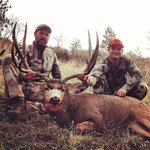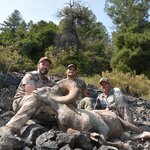IDMuleyKid
FNG
- Joined
- Feb 3, 2020
- Messages
- 45
As an avid reader of Ryan Hatfield’s “Idaho’s Greatest Mule Deer” it’s clear that unit 22 or Adams county once had epic hunting and possesses incredible genetics.
Nowadays after spending time in that area, it is clear that the Muley hunting is pretty bad and the area is littered with roads/bears.
Were these roads put in for logging? Are the bears/access to blame for the units historic downfall? Did the winter range get harmed etc?
I’m looking for theories/history on why an all time Muley area has fallen to a terrible low.
Also if anyone has stories about hunting that unit and how it’s changed I’d love to hear. I am enamored with Idaho's hunting history.
Nowadays after spending time in that area, it is clear that the Muley hunting is pretty bad and the area is littered with roads/bears.
Were these roads put in for logging? Are the bears/access to blame for the units historic downfall? Did the winter range get harmed etc?
I’m looking for theories/history on why an all time Muley area has fallen to a terrible low.
Also if anyone has stories about hunting that unit and how it’s changed I’d love to hear. I am enamored with Idaho's hunting history.


